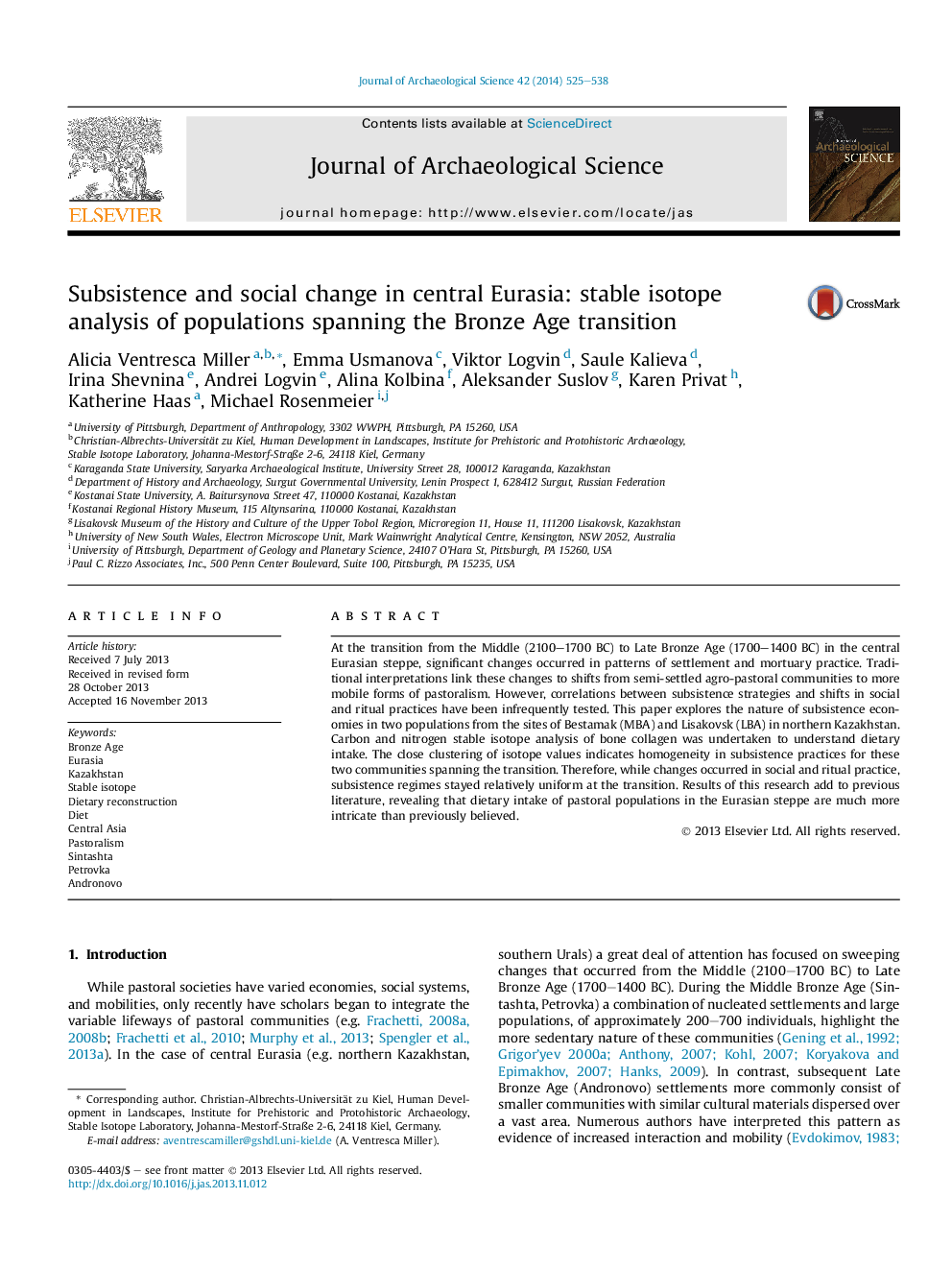| Article ID | Journal | Published Year | Pages | File Type |
|---|---|---|---|---|
| 7444054 | Journal of Archaeological Science | 2014 | 14 Pages |
Abstract
At the transition from the Middle (2100-1700 BC) to Late Bronze Age (1700-1400 BC) in the central Eurasian steppe, significant changes occurred in patterns of settlement and mortuary practice. Traditional interpretations link these changes to shifts from semi-settled agro-pastoral communities to more mobile forms of pastoralism. However, correlations between subsistence strategies and shifts in social and ritual practices have been infrequently tested. This paper explores the nature of subsistence economies in two populations from the sites of Bestamak (MBA) and Lisakovsk (LBA) in northern Kazakhstan. Carbon and nitrogen stable isotope analysis of bone collagen was undertaken to understand dietary intake. The close clustering of isotope values indicates homogeneity in subsistence practices for these two communities spanning the transition. Therefore, while changes occurred in social and ritual practice, subsistence regimes stayed relatively uniform at the transition. Results of this research add to previous literature, revealing that dietary intake of pastoral populations in the Eurasian steppe are much more intricate than previously believed.
Related Topics
Physical Sciences and Engineering
Materials Science
Materials Science (General)
Authors
Alicia Ventresca Miller, Emma Usmanova, Viktor Logvin, Saule Kalieva, Irina Shevnina, Andrei Logvin, Alina Kolbina, Aleksander Suslov, Karen Privat, Katherine Haas, Michael Rosenmeier,
